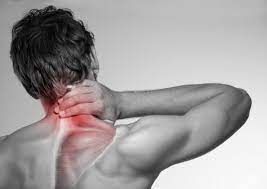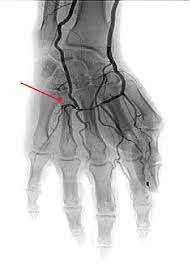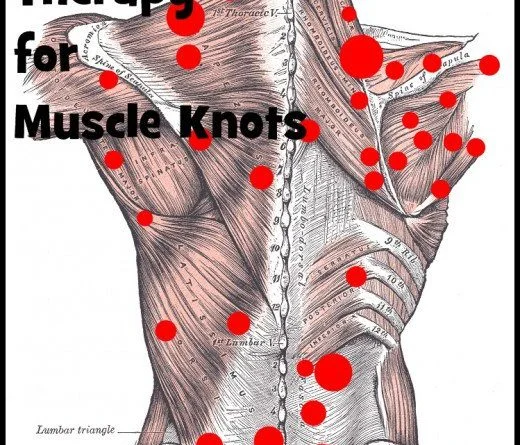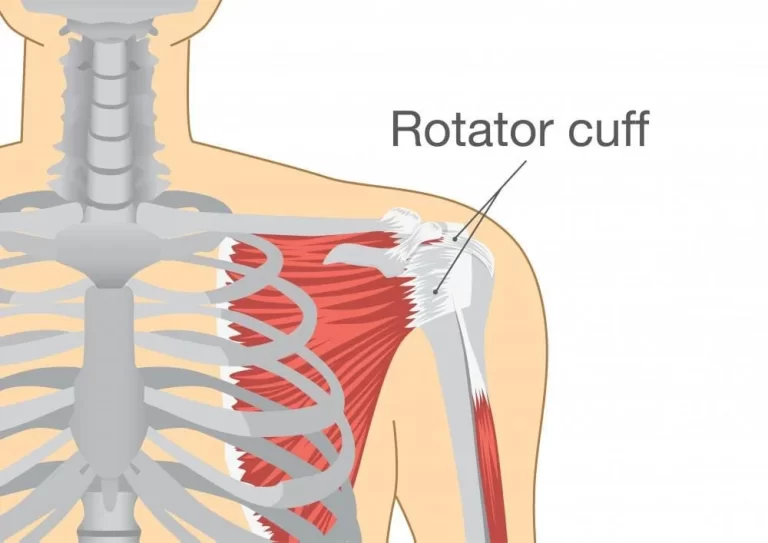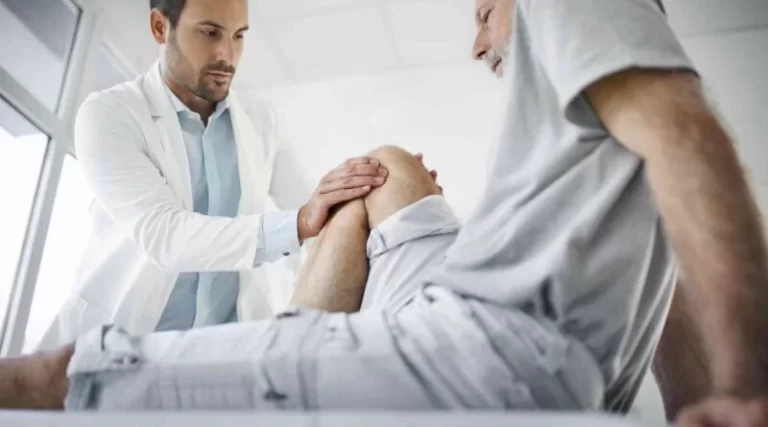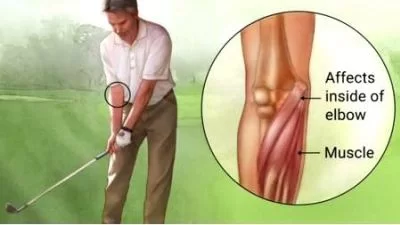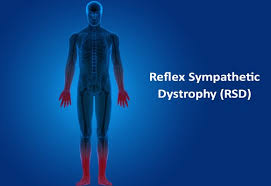Muscle Spasm In Neck
Table of Contents
What are neck spasms?
- A Neck muscle spasm is an involuntary tightening of muscle in the human body. It frequently causes intense Neck pain.
- This pain may last for some minutes, hours, or days after the muscle relaxes and the spasm is overcome.
- Spasms can occur in any part of the human body with a muscle, including a person’s neck.
How Neck Muscles Work–
- Neck muscle also helps to control speech, swallowing and chewing food, breathing, and performing facial expressions.
- These muscles are also attached to vital parts of the upper skeletal system and the bones of the skull, spine, shoulders, and collarbone.
- These neck muscles handle with the help of nerves that also control movement.
- Blood vessels give much-needed nutrition and energy to the muscle tissue.
- The neck muscles entitle the head to have a wide range of motion. It cannot only incline and move up and down but also turn sideways.
- These muscles assist the head in rotating both clockwise and counterclockwise.
Causes of neck spasm-
- Muscle spasms in the neck may range from infuriating to extremely irritating, or even painful in some cases.
- Neck spasms causes can arise from some very emerging causes.
- Below is a list of general neck spasm causes and what they consist of:
Neck Strain or Sprain-
- A neck strain or sprain is one of the foremost causes of neck spasms in the body.
- It’s generally caused by a pulled muscle or ligament from an injury to overexertion.
- This can cause issues to go about which are comprised of muscle reflexes and a neck spasm.
- The non-injured muscles and ligaments tend to tighten during this case and will subsequently cause the neck spasm to occur.
Overexerting Neck or General Fatigue-
- Most individuals have overexerted themselves at one point in time or another.
- The neck muscles are different in the fact they may be overexerted if used in unfamiliar ways.
- If people find themselves working in new ways physically, they may use their neck muscles in ways they have never thought possible. This will most likely lead to some common fatigue that could cause neck spasms in specific individuals.
- There are also researches that indicate when the same physical labor is performed in hot weather, there’s an increased risk for muscle spasms following the physical activity.
Herniated Disc-
- A herniated disc may turn out to be causing a whole host of issues as it expands over time, but it may also cause neck spasms to develop as well.
- Sometimes, the herniated disc can cause a leak of inflammatory proteins.
- This leak of inflammatory proteins can cause inflammation around the neck muscle area and cause neck spasms to occur.
Facet Joint Osteoarthritis-
- Facet joint osteoarthritis is a condition where the facet joint protective cartilage takes up to wear away and the adjacent vertebrae themselves set about to grind against one another.
- One after the other, bone spurs may develop and these bone spurs may cause inflammation and nerve compression, both of which can inevitably lead to neck spasms.
Mechanical Dysfunction-
- Any type of mechanical dysfunction in a person’s bones, joints, or muscles may be turned out to cause neck spasms because of the unnatural motion of said areas of the body.
- These mechanical dysfunctions may encompass poor posture, birth defects, bone spurs, and past injuries.
Peripheral Neuropathy-
- Peripheral nerves are those that tend to branch away from the spinal canal and make their own way into the peripheral nerves.
- When peripheral nerves are damaged from any kind of injury, ailment, or disease; there may be mixed signaling between the nerves and this in turn may result in neck spasms.
Myofascial Pain Syndrome-
- This condition tends to progress when there are painful trigger points being developed over time within the fascia of the tissue.
- This generally affects the muscle in or around the neck area.
- This in turn can cause muscle spasms in the neck area to occur.
Stress or anxiety-
- Typically, when individuals are under heavy stress or anxiety, their neck and back display physical signs of distress.
- This could cause neck muscle spasms in some individuals also.
Cervical Dystonia-
- This is a rare and unexpected condition that can cause neck spasms.
- As well as known as spasmodic torticollis and will involve the neck involuntarily tilting or rotating to the side.
- This type of condition affects the individual and is most commonly seen in individuals aged 40 and older.
- The imposed cause of this condition is not yet fully understood, yet some believe it may have a genetic complement to it where it runs in families.
- Moreover, a previous brain injury may be one reason for developing this condition.
Symptoms-
- Pain that’s often worsened by holding the head in one place for long periods, like when driving or working at a computer
- Muscle tightness and spasms
- Decreased ability to move the head
- Headache
Diagnosis of muscle spasm-
- Unless a person may not move at all because of an injury, the doctor probably will test the patient’s range of motion, check how the nerves are working, and press on your back to zero in on the problem area.
- You might have blood and urine tests to find out other diseases, like an infection or a kidney stone.
- A doctor typically finds the diagnosis of the muscle spasm after considering the patient’s full history of symptoms and physical examination.
- The doctor may want to know about the onset of the pain, how long the muscle spasms last, and how frequently they happen.
- Other needful information may include which muscle or muscles are affected, whether the spasms happen consistently in the same muscles or affect various muscles, and the circumstances surrounding the spasms.
- Prevail a full personal and medical history (for example occupation, hobbies, history of genetic disorders) may help the doctor to rule out underlying factors that move to the muscle spasms inpatient.
Other tests-
Blood tests-
- If the patient’s medical history and physical examination are not sufficient to diagnose muscle spasms, the doctor may suggest blood tests to check the individual’s levels of sodium, potassium, calcium, and magnesium.
A creatine phosphokinase –
- CPK blood test may be used to identify muscle breakdown. CPK is released as an outcome of muscle damage, which may happen if muscle spasms are prolonged.
MRI-
- If there is a concern for arteriosclerosis, imaging tests, like; ultrasound or magnetic resonance imaging (MRI), can be ordered to assess the blood vessels for narrowing.
CT SCAN-
- computed tomography angiography
- includes injecting dye into an artery near the groin or wrist, which can also be used to assess blood flow in the arteries.
EMG-
- Electromyography, which tests the muscle’s response to electric stimulation, can be ordered to rule out any disorders of the nervous system, like; MS and ALS, that might potentially cause muscle spasms.
Physiotherapy treatment-
- It includes massage therapy, some neck exercise, and stretching
NECK ROTATION–

- If the person trying to get instant relief from neck pain or spasms, neck rotation is one of the great exercises individuals can do.
- the person will start by sitting upright in a comfortable chair or standing up straight.
- Keep the chin level as the person turn their head to the left.
- Hold this position of the head there for 20 to 30 seconds.
- Then, turn the head to the right.
- Hold it there for a few extra 20 to 30 seconds.
- Repeat this exercise four times for each side.
NECK ROTATION WITH FLEXION-
- An alternative to the neck rotation exercise person can try is neck rotation with flexion.
- In this type of exercise, individuals turn their heads to the left, holding their hands together, clasped, behind their heads.
- Allow their arms to draw your their to your chest.
- This flexion will tilt their head toward the ground, putting an emphasized stretch on their neck muscles and getting person more bang for their buck.
- Hold the position for 15 to 20 seconds, then repeat three times before doing the same motion on the right side.
UPPER TRAPEZIUS STRETCH–
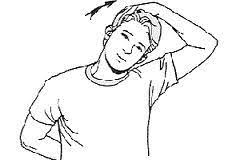
- Sit in a firm chair or stand upright, but make sure that to maintain a straight posture throughout this entire exercise.
- Start by relaxing both shoulders, keeping the shoulder down as the person leans away.
- Person can hold onto their chair or their thighs for balance if a person likes.
- Dip their head toward the shoulder and hold it there for up to 30 seconds.
- Their head will stretch the muscles in their neck with its weight.
- For added effectiveness, the person can put their arm behind their back, using the arm that is opposite of the direction in which the person is dipping their head.
- Repeat this stretch two to four times for each side.
LEVATOR SCAPULA STRETCH–
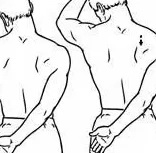
- This neck exercise will require individuals to sit in a chair with a firm back.
- If the person doesn’t have a chair available, They can also just stand up straight.
- Slowly tilt their head toward their shoulder. Turning their head to look down toward their armpit, dip their head slightly forward.
- Allow their head’s weight to gently stretch their neck.
- Hold this stretch for about 30 seconds, then release.
- Repeat this but also look toward the other shoulder. Repeat this stretch up to four times for each side.
SIMPLE CHIN TUCK–

- Begin with lying down for this massage, especially on the floor or another firm surface.
- Set down a rolled-up blanket or towel under their neck for support with their head touching the floor.
- Ask them to draw their chin up toward the front of their neck.
- Hold this position there for six seconds, then relax for ten seconds.
- Repeat this massage technique 10 to 12 times for relief.
FORWARD NECK FLEXION-

- Another simple neck exercise person can try to decrease the pain is forward neck flexion.
- For this exercise, Individuals have to either sit in a comfortable chair or stand.
- Allow the head to fall forward.
- Hold this exercise for up to 30 seconds, then return to the starting position.
- Repeat.
SCALENE STRETCH-

- The scalene stretch is another one person can do for almost immediate relief from spasms and pain.
- It will stretch the neck muscles that attach to individuals’ ribs.
- Begin this stretch while sitting in an upright position, with their hands clasped behind their back.
- Tell the person to lower their right shoulder, tipping their head in the opposite direction, to the left.
- Hold this stretch position for 20 to 30 seconds, then return to the starting position and repeat the stretch but on the other side.
- Do this stretch on both sides at least three times.
THORACIC EXTENSION–
- This neck exercise is somewhat such as a sit-up that takes place from a seated position.
- However it won’t do much to work their abs, it will work wonders for their neck pain and spasms.
- the person will sit in a chair with their both arms folded behind their head.
- Arch back and look toward the ceiling.
- Repeat this movement ten times and again several times throughout the day for ongoing relief.
Massage therapy:
- There are five different massage techniques to relieve back muscle spasms-
Effleurage –
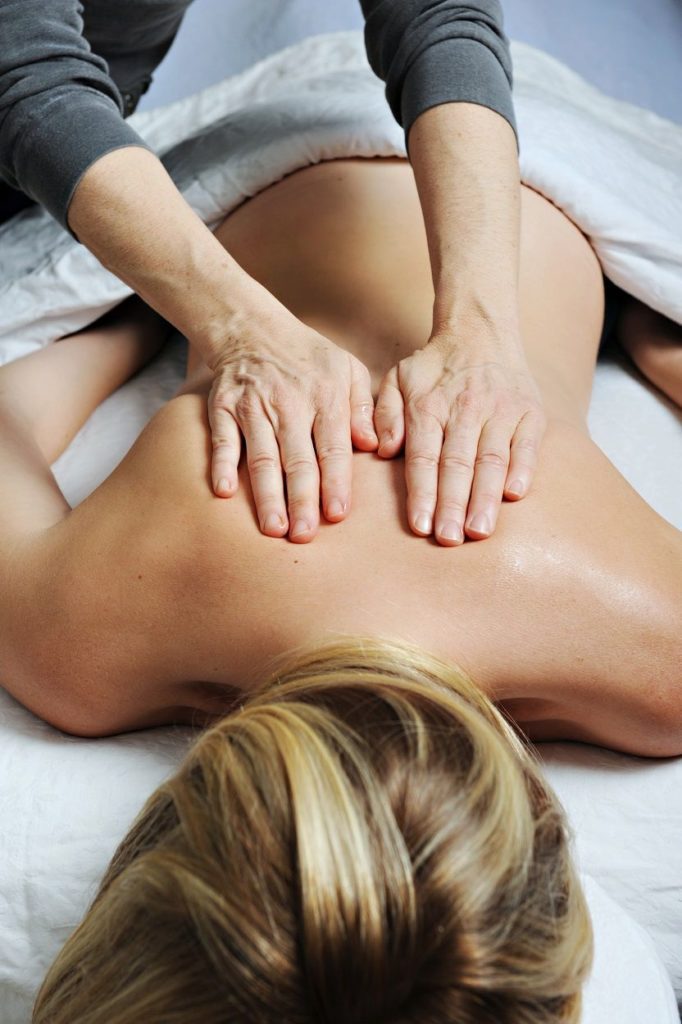
- Specify by long, sweeping strokes from the top to the bottom of the muscle.
Petrissage –
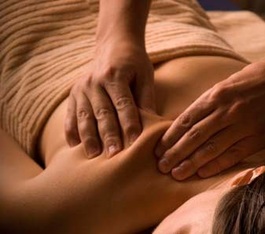
- It includes rolling and kneading motions on the muscle.
- Pressure generally depends on the sensitivity of the patient.
- This technique mainly focuses on the tense area of the neck.
- The massage therapist begins the Swedish massage with a light petrissage and gradually increases the pressure to release muscle tension.
Tapotement –
- This technique includes light and rhythmic tapping or drumming. The pressure and speed may be either relaxing or energizing.
Friction –
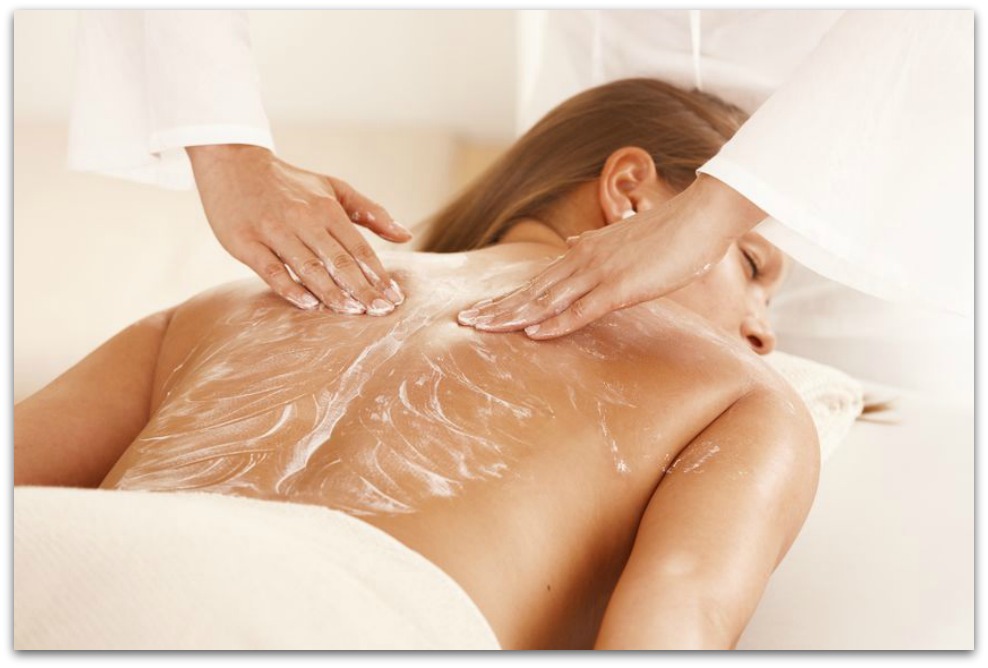
- The massage therapist can apply deep pressure to the affected muscle to release tension.
- Firm pressure on the involved muscle may help reduce tension and stop the spasm.
Other methods of massage-
- Things a person should know before giving a massage
- Start the massage with the fingertips to help warm up the person’s neck muscles.
- Give a well-rounded massage by focusing more on the back and sides of the neck, as well as the shoulder blades, collarbones, and upper arms.
- Use different parts of the hands to apply varying amounts of pressure during the massage.
- Give a supine neck massage by having some other people lay face-up in a slightly inclined position.
Method-1; Sitting position massage
1
- Giving a Seated Massage-Start with giving a comfortable position to patient in a sitting position.
- What’s more important is that patient’s back can be comfortably straight.
- Therapist also be able to access their shoulders and upper back.
- Use a stool that gives patient full access to their back.
- If therapist use a chair, be sure that the back of the chair is low enough to give therapist access to the back of their shoulders.
- If therapist doesn’t have an appropriate chair or stool, put the comfortable cushion on the ground.
- Have patient sit cross-legged on the ground while therapist kneel behind them.
2
- Use light, long strokes- When we think of massages, most of the therapist instantly think of the Swedish massage.
- It uses long, gentle motions along the surface of the muscles instead of the intense pressure of a style ,such as deep tissue massage.
- When therapist find tension knots, Therapist may apply focused pressure.
- For most of part, though, keep the pressure firm but not intense.
3
- Warm the muscles up- Rushing into intense massaging before warming up the muscles may cause individuals to tense up even more under therapist touch.
- Ease into the massage by using the fingertips to loosen up and prepare the neck and shoulders.
- This will put the patient in the frame of mind to relax into the experience.
- Therapist placed the ring, middle, and index fingertips of their hands where the base of their patient head meets the neck.
- Apply light but firm pressure.
- If that gives patient uneasiness, use whichever fingertips feel right for patient.
- Therapist might use just index and middle fingers.
- Then therapist move their fingers down the sides of their neck, sweeping over onto the shoulders.
- Be sure that, apply even pressure throughout the running fingers over the muscles.
4
- Therapist tends to knead their thumbs into the tense muscles. In the previous step, therapist may have felt hard knots in the muscles.
- These knots indicate tension, and they need focused pressure from therapist’s thumbs.
- Therapist place their thumbs on the tension knot.
- Place your other four fingers on each hand on the front of your partner’s shoulder to stabilize your thumbs when you apply pressure.
- Apply firm pressure with their thumbs in a kneading, circular motion to release the tension in the muscles.
- Do this throughout the shoulder muscles, but especially on tension knots.
5
- Therapist glide their fingers up and down the neck.
- The muscles in the back and sides of the neck carry a great deal of stress.
- Therapist will use one hand to warm up the neck muscles for more focused attention.
- Therapist place their thumb on one side of the neck, and the tips of their other four fingers on the other side of the neck.
- Apply and maintain firm but gentle pressure.
- Glide their hand up and down the length of the neck.
- Move along the size of the neck as well.
- Glide along the muscles either side of the spinal column on the back of the neck.
- Widen their hand to loosen the muscles on the sides of the neck as well.
6
- Pinch along the back of the neck.
- Therapist want to apply the same focused pressure along the sides of the neck with their thumb.
- But, they need their other four fingers to stabilize the pressure they are applying with their thumb.
- Working with both hands at once would force them to wrap their other fingers around the front of the throat.
- This would cause their patient’s pain and discomfort. Instead, work with one hand at a time.
- Stand behind and slightly to their right.
- Place the thumb of the left hand on the right side of their neck.
- Wrap their other four fingers around to the left side of their neck to stabilize the thumb’s pressure.
- Just as you did on the shoulders, knead their thumb in circular motions up and down the length of the neck.
- Focus attention on any tension knots you encounter.
- When you’ve finished the right side of your patient’s neck, move to stand behind and slightly to the left of them.
- Repeat the process with the right thumb on the left side of the neck.
7
- Therapist glide their hands down the sides of the neck.
- It can be difficult to massage the sides of the neck without bothering their patient’s throat.
- To do this, patient will glide their hand in a downward motion from the top of the neck to the front of the shoulder.
- Start on the left side of the patient body.
- Place the left hand on their left shoulder to stabilize them.
- With the fingers on their right hand facing downward, place your thumb on the back of the neck and your remaining fingers on the side of it.
- Applying pressure, glide the hand in a downward motion.
- At the end of the motion, the position of thumb should be on the back of the shoulder and the other fingers should be on the front of the shoulder.
- Knead all fingers into any tension points you feel.
8
- Apply pressure to the outsides of the shoulder blades.
- Press the fingertips into the shoulder blades and apply soft pressure.
- Move both hands in a circular, kneading motion to release tension from the muscles in the upper back.
9
- Therapist use the heel of their palm between the shoulder blades.
- Because the spine is in the center of the back, it may be difficult to massage that area.
- Applying focused pressure to the spine will may cause pain.
- Instead, use the palm to apply broad pressure.
- Move so you’re standing at your patient’s side.
- place one hand on the front of the shoulder to stabilize them.
- Place the heel of the palm between the shoulder blades.
- Put in a firm pressure in a long, deliberate stroke from one shoulder blade to the other.
10
- Massage just under the collar bone.
- However, most of the massage focuses on the shoulders, neck, and upper back, a little attention to the upper chest may help to relieve neck pain.
- Standing at your patient’s side, place on hand on their back to stabilize them.
- Use all the fingertips to rub firmly in circular motions just under their collar bone.
- Be sure not to pressure on the bone itself, as this will cause pain.
Method 2-supine position
1
- Place the patient in the supine position.
- “Supine” means that individual laying down on their back. Ideally, therapist can find an elevated surface for them to lay on which allows patient to stand or sit in a chair at their head.
- If they lay on the ground, therapist will have to bend over quite a bit, and this could hurt therapist’s back.
- Tie long hair back so it doesn’t hang in your patient’s face.
- If patient have long hair, sweep it back and over the side of the table or bed so therapist don’t accidentally pull it during the massage.
- Ask them to either remove their shirt or to wear a top that open up their chest from the collarbone up.
- Therapist should provide a towel or blanket if patient is uncomfortable with exposing their chest.
2
- Take a massage oil or lotion.
- Patient can sometimes find massage oils at department stores, but if not, they can be purchased online.
- Some household oils, like coconut oil, also make great massage oils.
- Olive oil, almond oil, and sesame oil may work well, but they suppose to be heavy and thick.
- Use little amounts of these oils for a massage.
- Be sure your patient doesn’t have any nut allergies before using almond or sesame oil.
- Work with using the oil or lotion through your hands by rubbing them together.
- This warms the create to make it more comfortable for them.
3
- Warm up gently.
- Standing behind the patient’s head, place the heels of your palms against the sides of the neck.
- Use long, merciful Swedish strokes to apply pressure down the neck and over the shoulders.
- Place both the thumbs under the neck and run the inside of the index finger down the length of it.
- Start with the ear and work down to where the neck meets the shoulder.
- Stroke up the motion out over their shoulders as well.
- Therapist can also use your middle, ring, and pinky fingers on the front of the shoulders.
4
- Apply more focused pressure to the neck.
- Place four fingers ‘’under’’ of the neck.
- Apply firm pressure, running the fingers from the base of the skull to the shoulder.
- Loosen the muscles further by gently pulling the fingers up and away from the table or mat.
- In doing so, the patient’s head should almost be lifted from the surface.
- Repeat this exercise with the fingers all along the length of the neck.
5
- Work the neck and shoulders with both of thumbs.
- Just lift up the index finger through pinky fingers in the air, and place both thumbs on the sides of the neck, just below the ears.
- Applying firm pressure, glide with the thumbs down the sides of the neck.
- Slither them over the shoulders, all the way to the edges where they meet the arms.
- Use the length of thumb, not only the tip.
- This applies diffused pressure rather than focused pressure.
- Make sure that therapist should from the exposed front of the throat.
- Applying pressure there will cause a good deal of pain.
6
- Massage the chest.
- The muscles in the front of the chest work in concert with those in the neck, so it’s important for therapist to give them some attention.
- Place through the thumbs lightly against the back of the shoulders.
- Place the other four fingers along the front of the shoulders.
- Apply kneading pressure both by using the front of the shoulders and to the upper chest, under the collarbone.
- Be sure not to apply pressure directly to the collarbone, or any bone.
- This may be very painful.
7
- Apply rolling pressure under the neck. Place the index, middle, and ring fingers under both sides of your partientr’s neck.
- Starting up with the ears, apply pressure in a rolling motion away from the head, toward the shoulders. Be firm, but not rough.
- The therapist’s motion might lift their shoulders a little bit off the surface, but they should not be flinching
8
- Focus on each side of the neck.
- Turn their head to the side to expose the side of their neck to the therapist.
- Support the patient’s head by keeping one hand placed under it.
- Once you’ve finished working one side of the neck, gently turn your head the other way and work the other side.
- With the free hand, use the fingertips to apply long, firm strokes from the earlobe down to the chest.
- Use the thumb to knead the side of the neck in small circles.
9
- Put deep tissue pressure on the sides of the neck.
- Deep tissue techniques may cause pain, so therapists need to be alert to their patient’s reactions while doing this.
- Although the muscles behind the ears may become very tense, so the therapist must apply more intense pressure there to break up the knots.
- For this massage technique, the head should still be turned to the side, with one of the hands cradling it from below.
- Make a loose fist with the free hand and push the side of the fist into the side of the neck, just behind the ear.
- Apply intense pressure and move the fist very gently down the side of the neck.
- Work the way down to where the neck meets the chest.
10
- Work your fingertips in circular motions behind the ears.
- The muscles behind the ear, just below where the head meets your neck, tend to grow quite tense.
- Return your patient’s head to an upright position for this technique, so the therapist can work both sides of the neck at the same time.
- Place the fingertips on those muscles and apply firm (but not painful) pressure.
- Move the fingertips in a circular motion to break up the tension in that area.
11
- Massage the muscles just above the collarbone.
- The therapist feels a small dent right above the collarbone.
- Use the fingertips to gently massage the muscles in that area using both circular and kneading motions.
Home remedies-
MASSAGE
- In addition to stretching, massaging a patient’s neck is one of the best things an individual can do for relief.
- Massage therapy will help the person to relax their body, offering relief from tight muscles and neck pain.
- By placing pressure on the stiffest, most tender points in the neck, the person can relieve tension from the stressed-out muscles and restore the full range of motion in the neck.
NSAIDS
- NSAIDs like naproxen and ibuprofen shouldn’t be the first line of defense when it comes to treating spasms.
- They won’t monologue the underlying issues causing the spasms in the first place – like muscle tightness or injury – but they may offer temporary relief from inflammation and pain.
- The welfare of using NSAIDs is that they ask quickly but individuals need to make sure that they read the warning labels first, particularly when you are taking some other form of medication.
HOT/COLD THERAPY
- Cold therapy will help relieve local inflammation, decreasing the pain one can experience.
- Just grab an ice pack or fill a plastic bag with ice, then press it on the inflamed spot on your neck.
- Just don’t do it for a long time, as it can cause skin damage.
- Heat therapy is another option.
- Put the heating pad to your neck, switched on at a low setting, to the area of your neck that is most tender.
- If the person doesn’t have a heating pad, an alternative is to simply stand in the shower with a gentle flow of warm water flow onto the tender area of the neck.
- It will increase blood flow and reduces your pain.
- Remember, when applying any kind of heat or cold directly to the skin, limit applications to 15 minutes every two hours to reduce the risk of skin damage.
RELAXATION
- When a patient’s neck is spasming, it might be difficult for the person to rest – but relaxation is key when it comes to getting over your spasms.
- If individuals can to able to lie on their back with a cervical pillow or neck roll beneath the head.
- Put a pillow under both knees and listen to your favorite podcast or calming music to help you relax.
- The stress will melt away!
Contraindication-
Individuals may need to stop or ease back on the following exercises during recovery unless your doctor or physical therapist says it is OK:
- Jogging
- Contact sports
- Racquet sports
- Golf
- Dancing
- Weight lifting
- Leg lifts when lying on your stomach
- Sit-ups
- Stretches and Exercises
Prevention of neck spasms-
- Take regular screen breaks.
- Exercise regularly.
- Use a laptop or computer stands to adjust screen height.
- Make sure office chairs promote good posture.
- Improve posture with strengthening exercises, such as planks.
- Make sure to stretch at the earliest sign of neck pain.
- Using supportive pillows.
FAQ
Most neck spasms have a common cause. If caused by an injury, it is important to speak to a doctor straight away. A person should also, speak to a doctor if their symptoms are too severe or last longer than a week.
Neck cracking, as well known as neck manipulation, may be used to help treat neck pain. In very rare cases, this has led to a stroke. This may happen if an artery in the neck tears. A blood clot may form, blocking blood flow to the brain.
Dehydration is the most common cause of both neck stiffness and neck pain. The dehydrated body develops tighter muscles, ligaments, and tendons which may lead to neck stiffness. This tightness makes it more difficult to move an individual’s neck and can sometimes cause pain.
Without enough fluid, The human body’s muscles can become extremely sensitive and spasm or contract involuntarily. Individuals need water to flush their bodies of cellular waste. A buildup of toxins may lead to inflammation, which often results in pain. Water helps lubricate our joints, and may also help ward off joint pain and discomfort.
Vitamin D deficiency and insufficiency may cause or worsen neck and back pain and muscle spasm.

